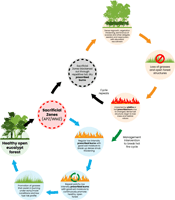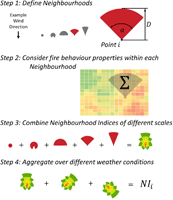With increased wildland fire risk, more intense fire behaviour, longer seasons, and fire evolving across many landscapes, a changing climate poses significant challenges to today’s fire regimes and management strategies. These changes have significant human impacts, from smoke to mental health, and from community loss to the many tolls exerted on firefighting personnel. This Special Collection on “Fire and Climate” showcases papers from and inspired by the eponymous conferences hosted by the International Association of Wildland Fire. The collection explores the way that climate change is affecting wildfire around the world – and the ways that changes in societal, legal, and political climate changes interact with these geophysical processes.
Guest Editor
Eric B. Kenedy (York University, Canada)
Last Updated: 15 Oct 2024




